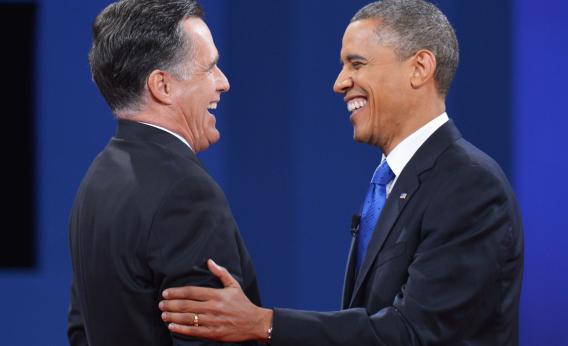There seems to be some confusion about whether or not the United States just witnessed a close election. Perhaps some historical perspective can help: Yes, this was a close election.
Here’s why:
If we include Florida, Obama appears to have won 332 electoral votes to Romney’s 206. In the popular vote, the latest numbers suggest an Obama victory of 50.4 percent to Romney’s 48.1. This is not recount territory. Measured by the standards of the 20th century, though, it reflects a genuinely tight race.
Between 1900 and 1999, only five of the 25 presidential elections were decided by fewer than 130 electoral votes. Only three had a popular vote margin smaller than the Obama-Romney contest. It’s a sign of how accustomed we’ve become to razor-thin margins of victory that Obama’s 2.3-percent popular-vote victory seems almost like a rout.
For much of the 20th century, decisive elections were the rule rather than the exception. In the 1920s, Republicans won all three presidential elections with anywhere from 54 to 60.3 percent of the popular vote. During 1930s and 1940s, the balance flipped, with Franklin Roosevelt winning anywhere from 53.4 to 60.8 percent of the popular vote, and as much as 98.5 percent of the Electoral College. That extraordinary run came to an end with the nail-biter of 1948, in which Harry Truman was widely predicted to lose to Republican Thomas Dewey. Even that race, though, turned out to have a wider popular margin of victory than Obama-Romney. When the votes were tallied, Truman won with 49.5 percent of the popular vote to Dewey’s 45.1 percent, and 303 electoral votes to Dewey’s 189.
The closest election of the 20th century was the bitterly contested showdown between John F. Kennedy and Richard Nixon in 1960. Kennedy won the electoral college by a decisive if not overwhelming margin, garnering 303 electoral votes to Nixon’s 219. But the popular vote was more or less a tie, with Kennedy claiming just 49.7 percent to Nixon’s 49.5, amid widespread accusations of corruption and vote-buying.
Nixon came back eight years later with a squeaker of his own, winning over Hubert Humphrey by 0.7 percent of the popular vote. It’s worth noting, though, that both of these close elections were followed by absolute blowouts. In 1964, Lyndon Johnson’s trounced Barry Goldwater with 61.1 percent of the popular vote and 486 electoral votes. In 1972, Nixon won a landslide of his own, claiming 60.7 percent of the popular vote and a whopping 96.7 percent of the Electoral College. Whatever else was happening during those years, it was not an era of consistently close elections.
Outside of the 1960s, the tightest races of the 20th century produced popular-vote margins roughly comparable to Obama-Romney. In 1916, Woodrow Wilson won a second term with a popular-vote victory of 49.2 percent, to 46.1 percent for Republican stalwart Charles Evans Hughes. In 1976, Jimmy Carter rousted Gerald Ford 50.1 percent to 48. The electoral vote, in both cases, was narrower than Obama’s 2012 victory.
Other than that, every single election of the 20th century was decided by a larger popular or electoral margin than we’ve seen in 2012. Almost one-half of the century’s elections were decided by popular margins of more than 10 percent. What’s extraordinary about the present moment is not so much the narrow margin of victory as the consistent run of close elections. Americans who lived through the 1916 election had to wait more than three decades for a comparably tight contest. By contrast, three out of four of our last elections have been decided by a popular-vote margin of less than 3 percent. The time we saw anything approaching a landslide was Ronald Reagan’s victory in 1984.
In that sense, our own political moment best resembles the Gilded Age of the late 19th century, the last sustained period when close elections were the norm. Historians usually describe the Gilded Age as an uninspiring era in national politics, when party machines, back-room power-brokers, and a campaign-finance free-for-all led to lackluster national debate. It was also an era in which politics were unusually partisan, often at the expense of tackling the genuine challenges facing the nation: growing inequality, immigration, corporate power, urban development.
Lest this all sound too familiar, it’s worth noting some important differences: the presidency was less powerful in the 19th century and the electorate consisted mainly of white men. But the Gilded Age has at least one lesson to offer about what our repeated run of close elections might mean. Conventional wisdom suggests that close elections reflect a divided electorate: red/blue, liberal/conservative, Republican/Democrat. The Gilded Age suggests that close elections may in fact be a sign that nobody, on either side, is thinking big.
